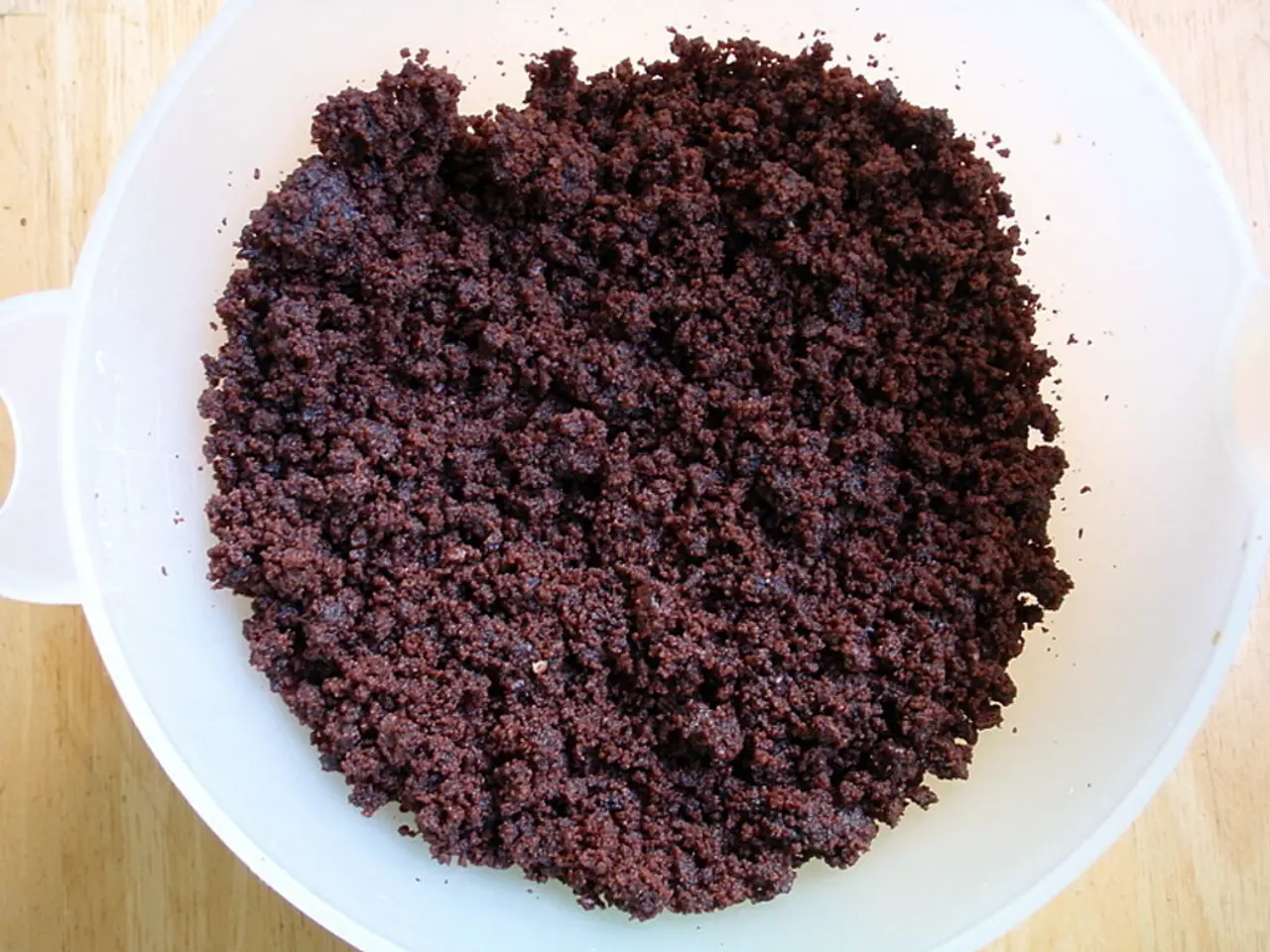Pregnancy-Associated Gallstone Formation: Symptoms and Remedies
Gallstones, small pebble-like deposits that form in the gallbladder, can pose a challenge during pregnancy due to hormonal changes and the need to balance the health of both mother and baby. This article provides an overview of the common symptoms, treatment options, and preventive measures for gallstones in pregnant women.
Risk Factors and Symptoms
Gallstones can form when the components in bile become unbalanced. Pregnancy, being female, being over 40 years old, having a family history of gallstones, being obese or overweight, taking the antibiotic ceftriaxone, and certain medical conditions such as cirrhosis, Crohn's disease, irritable bowel syndrome, obstetric cholestasis, primary sclerosing cholangitis, or a diagnosis of gallstones may require abdominal imaging, with ultrasounds being commonly used for pregnant people.
Common symptoms of gallstones in pregnant women include:
- Intense upper right abdominal pain or epigastric pain, often after fatty meals, sometimes radiating to the right shoulder or back between the shoulder blades. This pain can be intermittent and last about an hour or more.
- Nausea and vomiting.
- Jaundice-like symptoms such as yellowing of the skin or eyes, light-colored stools, and dark urine.
- Intense itching due to cholestasis (bile flow impairment) associated with gallbladder dysfunction.
- Bloating and flatulence.
Treatment Options During Pregnancy
Treatment options during pregnancy prioritize safety for both mother and fetus, balancing symptom severity, gestational age, and risk.
Conservative, Non-surgical Management
During the first and third trimesters, conservative, non-surgical management is preferred to avoid risks of miscarriage or premature birth. It includes:
- Pain control mainly with intravenous meperidine (NSAIDs are avoided).
- Intravenous fluids to correct dehydration and electrolyte imbalances.
- Bowel rest and fat-restricted diet to reduce gallbladder stimulation.
- Ursodeoxycholic acid (UDCA) or ursodiol to reduce itching and improve bile flow; this may also help dissolve gallstones.
- Antihistamines may be used for itching, but topical corticosteroids are not effective for cholestasis-related itch.
- Broad-spectrum antibiotics if infection (cholecystitis) is suspected.
- Hospitalization for monitoring fetal wellbeing and maternal condition when needed.
Surgical Treatment (Cholecystectomy)
Surgical treatment (cholecystectomy) is generally delayed to the second trimester or postpartum when possible to minimize risks. In acute or severe cases, advanced surgical techniques may be considered earlier for better outcomes.
In cases of gallstones blocking the common bile duct, procedures like ERCP (endoscopic retrograde cholangiopancreatography) may be used to remove stones and relieve blockage, followed by gallbladder removal after recovery.
Prevention and Lifestyle Changes
A diet high in fruits, vegetables, and whole grains and low in saturated fat may help prevent gallstones. Foods high in saturated fat, such as butter, lard, ghee, cakes and cookies, cream, foods containing coconut or palm oil, hard cheeses, meat pies, sausages, and fatty cuts of meat, should be restricted.
Weight loss, if a person is overweight, can help prevent gallstones in some people, but losing weight too quickly can increase the risk of gallstone formation. The United Kingdom's National Health Service (NHS) recommends nuts, such as peanuts or cashews, as they may help reduce the risk of gallstones forming.
When to Seek Medical Attention
Signs or symptoms that may require immediate medical attention include jaundice, abdominal pain for longer than 8 hours, a high temperature and chills, and abdominal pain so severe that a person is unable to get into a position that relieves it.
Pregnant people who get gallstones may not experience symptoms, but any new symptoms during pregnancy or following delivery may require a talk with a healthcare professional. For people experiencing mild and infrequent gallstone pain, doctors may recommend pain relievers and dietary changes.
In more severe cases, surgery may be recommended. In cases where the pain is more severe, doctors may recommend gallbladder removal surgery (cholecystectomy). Laparoscopic cholecystectomy is a minimally invasive surgery often performed in the second or early third trimester, but it may be performed at any time during pregnancy if necessary.
- Pregnant women with a family history or diagnosis of gallstones might need abdominal imaging, such as ultrasounds, for early detection and better management of the condition.
- If cholecystitis (inflammation of the gallbladder) is suspected during pregnancy, broad-spectrum antibiotics may be prescribed to combat the infection.
- In the context of womens-health and menopause, regulation of hormonal changes could potentially impact the formation of gallstones.
- Pfizer might develop new treatments for chronic health issues like gallstones, contributing to the advancement of health-and-wellness science.
- During pregnancy, mental-health issues, such as stress or anxiety induced by the condition or treatment, should also be considered and addressed to ensure the overall well-being of both the mother and baby.




